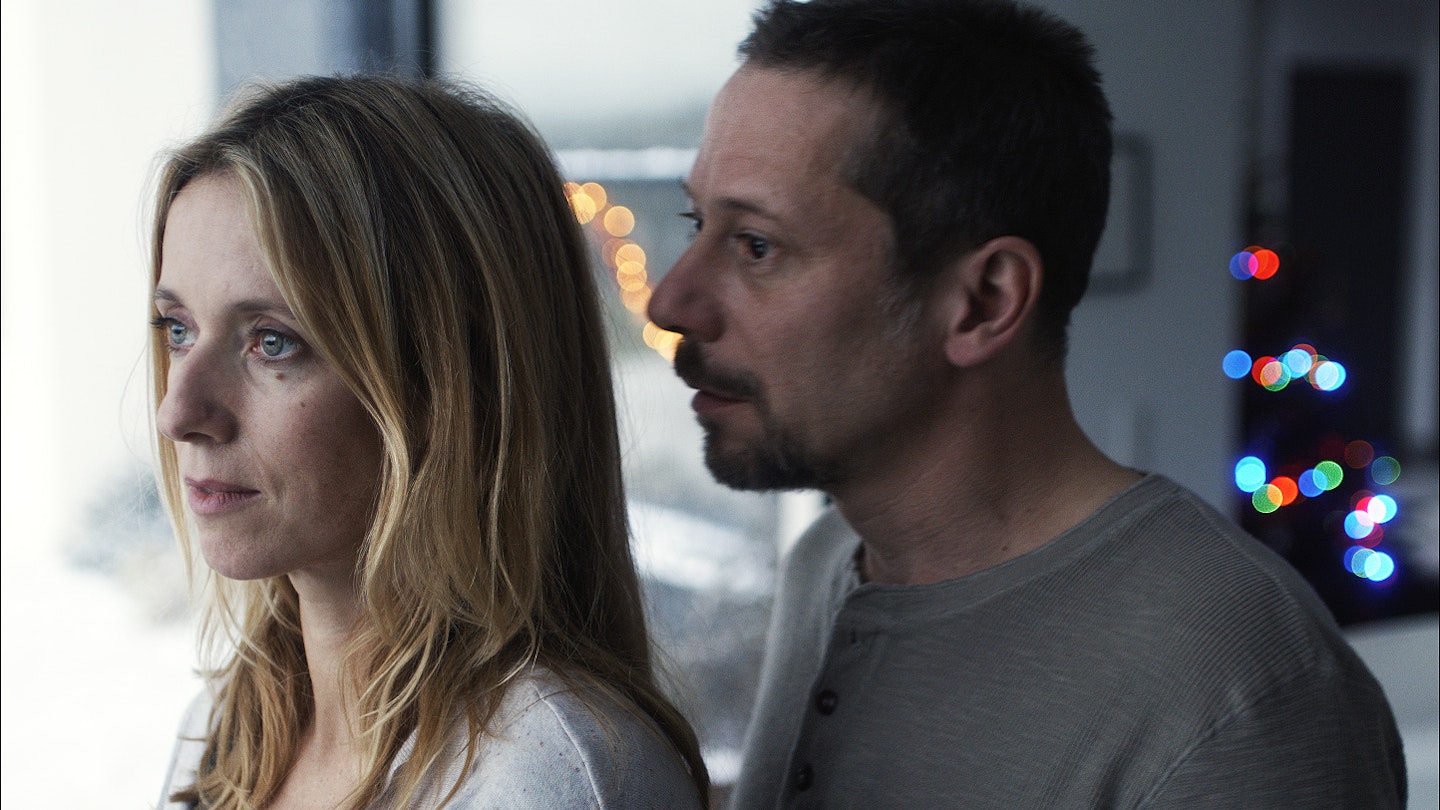When the prolific Belgian author Georges Simenon published this simmering psychological thriller in 1964, French culture was in thrall to the nouveau roman and the nouvelle vague. With its fragmented structure, elliptical editing and forensic dissection of bourgeois morality, it could easily have been filmed in lowering monochrome by Alain Resnais or Claude Chabrol. Perhaps that is why Mathieu Amalric has chosen to shoot in the Academy ratio, although the boxy frame reinforces the sense of claustrophobia that pervades this teasing whodunwhat, which drops hints without divulging all of its secrets.

Flitting between timeframes, the action is bookended by scenes in blue rooms. The first is a hotel boudoir, where Stéphanie Cléau concludes an afternoon session of illicit love-making by biting the distracted Mathieu Amalric on the lip. A single drop of his blood will later be mirrored by a splash of plum jam before he and Cléau find themselves in a blue courtroom, where the perplexed Amalric finally realises what has been happening to himself and his family (or does he?).
What occurs in between is largely dictated by the questioning of investigating magistrate Laurent Poitrenaux. But Amalric and editor François Gédigier are so guarded with clues and facts alike that the audience is forever having to re-evaluate characters and situations to discern where the truth might lie. Amalric's direction echoes the brisk efficiency of Simenon's prose, while his performance is mired in regret, guilt and confusion, as he laments becoming involved with the femme fatalistic Cléau (his off-screen partner) and losing control of his dull, but cosy life with his wife and daughter. But it's the way in which Amalric sustains the mood and tightens the noose that makes this so gripping.
